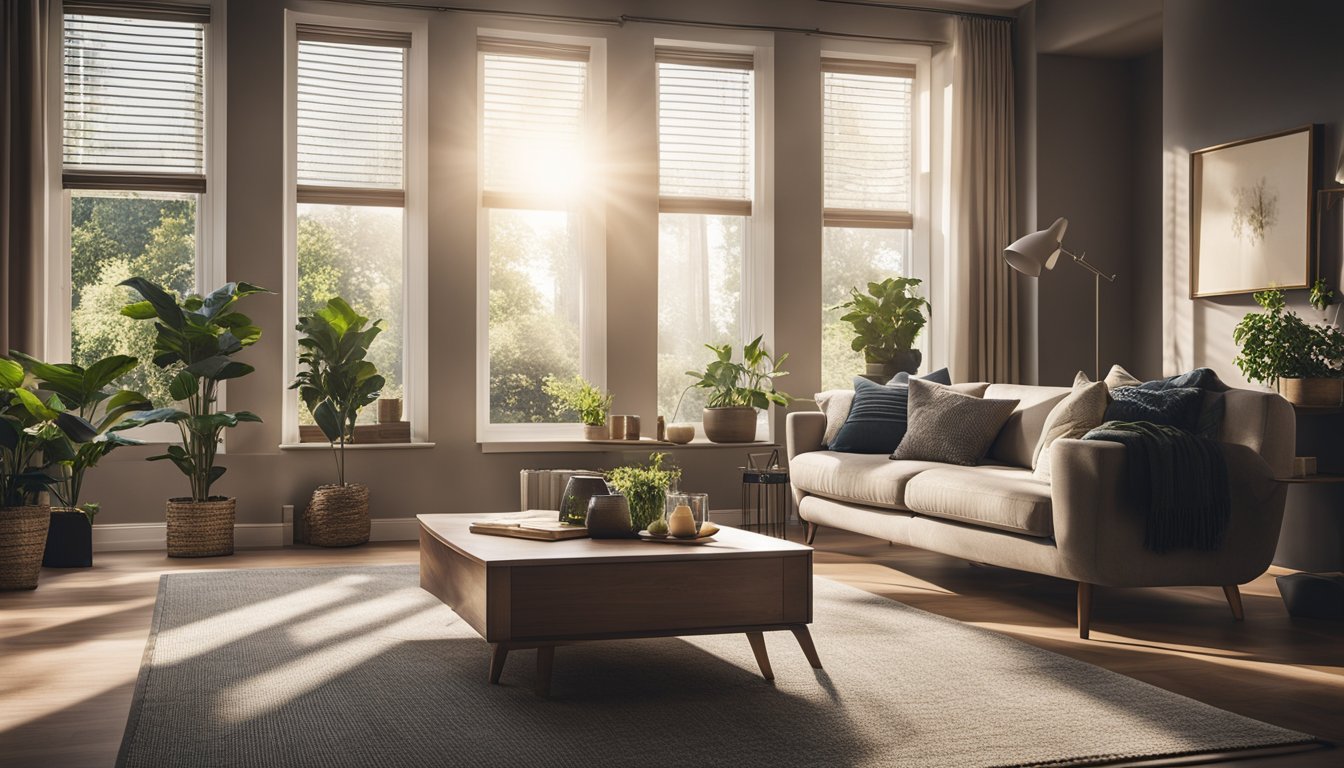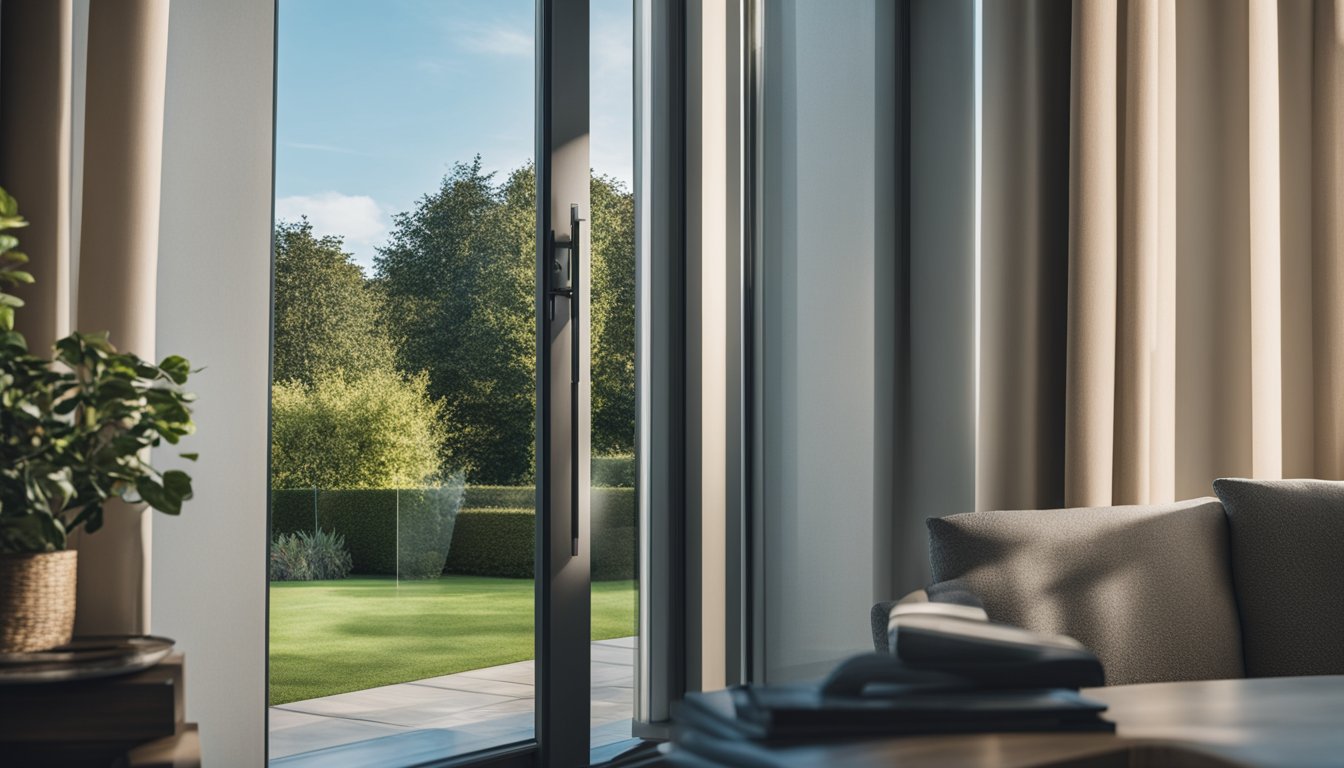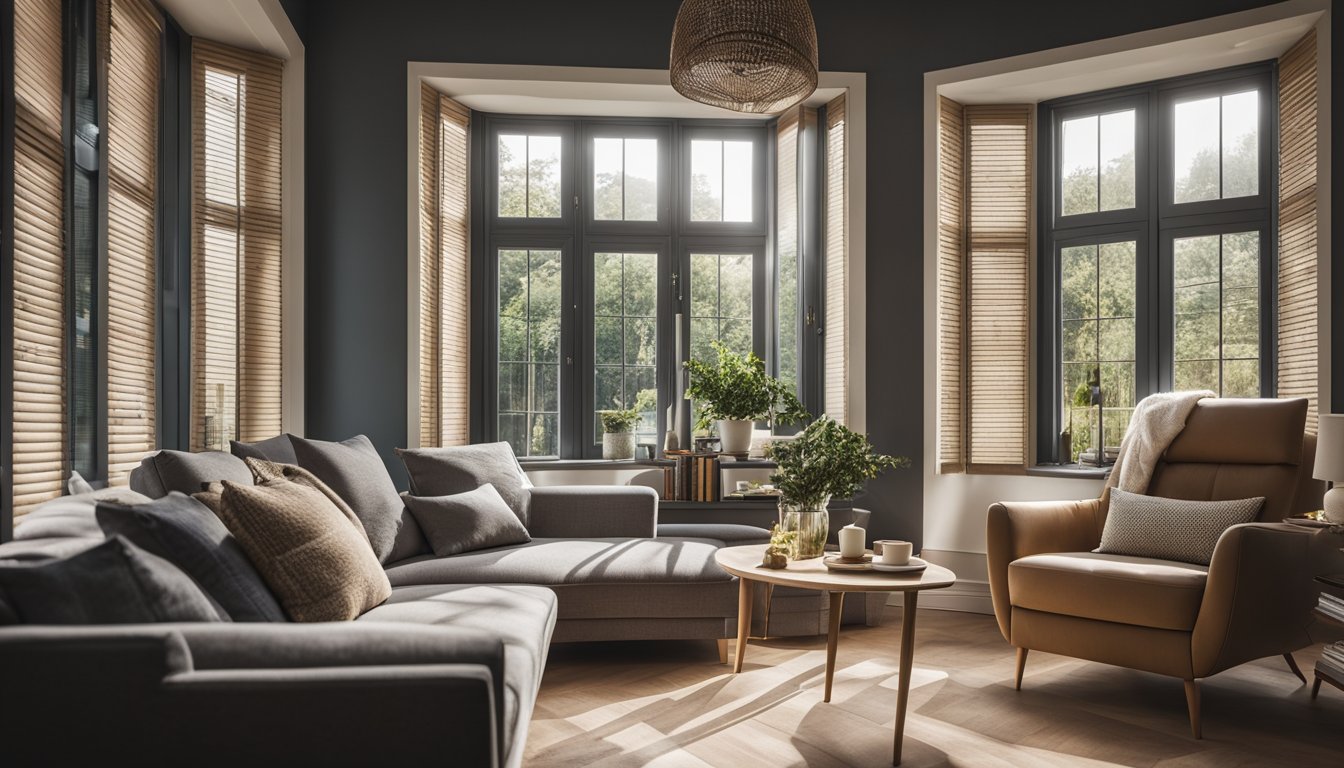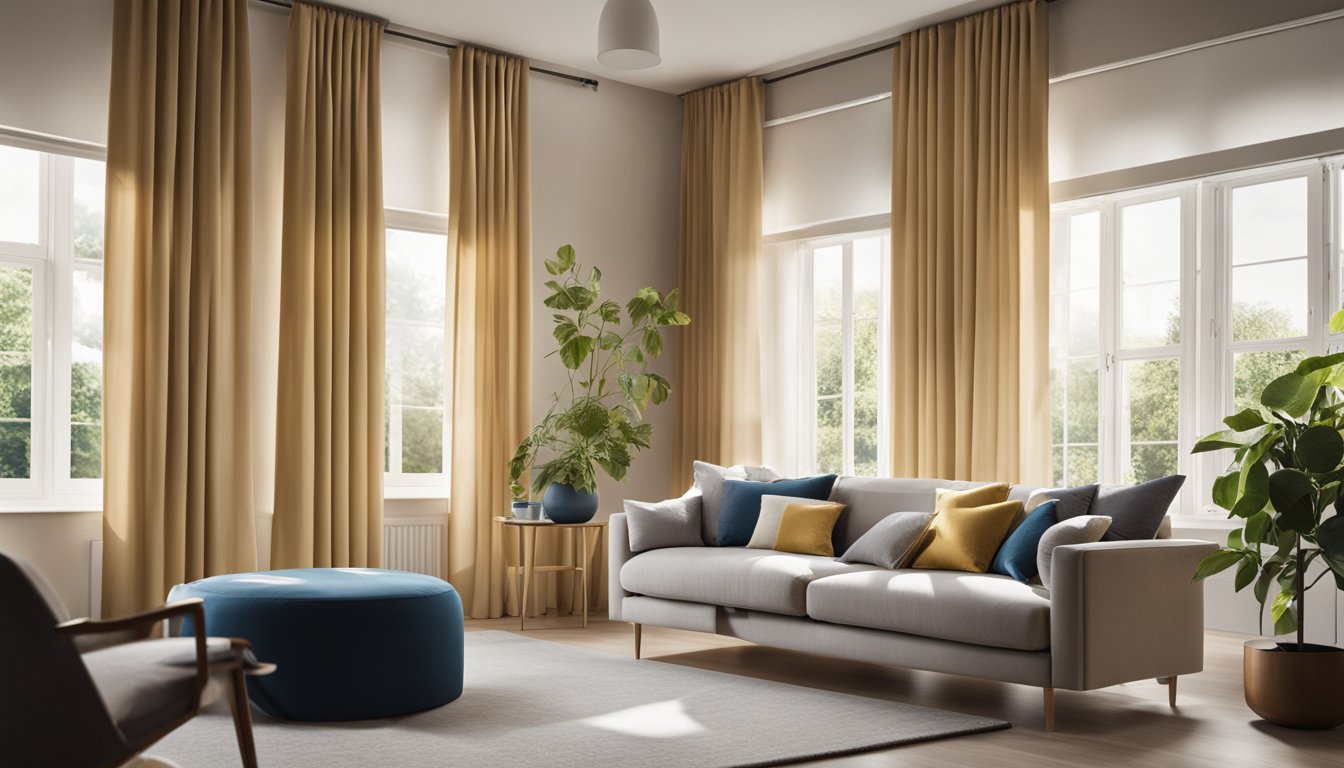Late updated: 26 Nov 2024 12:11
Written by: Eleanor Hartman
Enhance Energy Efficiency With UK Window Treatments: Improve Comfort and Cut Costs
Enhancing energy efficiency in UK homes is more than trendy—it's essential, considering the unique British climate. Our homes face varying conditions, from scorching summer days to freezing winter nights. By upgrading window treatments, we can effectively manage temperature extremes and significantly reduce our energy consumption. Energy-efficient window treatments play a crucial role in maintaining a comfortable indoor environment by minimising heat loss in winter and reducing solar heat gain in summer.

Optimal window treatments can drastically impact energy savings and are applicable to both old and new homes. We've seen how even small changes, such as choosing the right blinds or shutters, can lead to substantial improvements in energy efficiency. Importantly, enhancing window efficiency offers not just cost savings but also contributes positively to environmental sustainability.
We'll examine how properly selected and installed window treatments are vital in our efforts to maximise energy efficiency. Our goal is to provide practical insights and actionable advice that can transform any UK home into a model of energy efficiency.
Key Takeaways
- Energy-efficient window treatments reduce heating and cooling costs.
- Proper window treatments enhance comfort and sustainability.
- Upgrading is vital for balancing UK climate variations.
Principles of Energy Efficiency in Window Design

Energy efficiency in window design involves optimizing thermal performance and selecting appropriate materials. Emphasising these principles can reduce energy consumption and enhance indoor comfort levels.
Understanding Thermal Performance
Thermal performance is a key factor in window design that significantly affects energy efficiency. Our focus should be on reducing heat loss in winter and minimizing heat gain in summer. Windows with high thermal performance have specialised components such as double or triple glazing, low-emissivity coatings, and insulated frames.
Double and Triple Glazing: These glass configurations enhance insulation, limiting heat transfer.
Low-Emissivity Coatings: These invisible layers reflect heat back into the room while allowing light to pass through.
Insulated Frames: Durable materials like fibreglass or vinyl can further improve thermal properties by reducing overall thermal bridging.
Role of Glazing in Energy Conservation
Glazing plays a vital role in conserving energy by modulating light transmission and thermal exchange. By incorporating advanced glazing technologies, we can take advantage of natural light while controlling indoor temperature.
Spectrally Selective Glazing: This type allows specific wavelengths of sunlight to penetrate while blocking others, reducing unwanted heat.
Smart Glass Technology: Utilises electrochromic or thermochromic properties to change transparency based on environmental conditions or electronic input.
Argon or Krypton Gas: Filling the space between panes, these gases provide superior insulation compared to air, reducing U-values and enhancing energy conservation.
Selecting the right glazing options can lead to significant improvements in a building's energy efficiency, lowering heating and cooling costs. Integrating such innovations in window design enhances not only energy efficiency but also the comfort and sustainability of indoor environments.
Optimising Window Treatments for UK Homes

To boost energy efficiency in UK homes, window treatments play a pivotal role. We explore the choice of materials, how smart technology can enhance efficiency, and what maintenance is required to ensure longevity.
Selection of Materials and Fabrics
Choosing the right materials and fabrics is essential for maximising energy efficiency. Insulating fabrics, such as thermal-lined curtains, can significantly reduce heat loss during colder months. Cellular shades are another excellent option, as they trap air within their cell structure, offering better insulation.
Reflective materials, like those with metallic coatings, can minimise heat gain during warmer months. These advanced materials block harmful UV rays and reduce glare while maintaining a clear view. Selecting high-performing window treatments tailored to seasonal demands ensures optimal comfort and energy savings year-round.
Integration with Smart Home Systems
Integrating window treatments with smart home systems allows us to automate their operation for enhanced energy efficiency. Smart blinds and curtains can be programmed to adjust in response to sunlight patterns, helping manage indoor temperature and lighting based on time of day or external weather conditions.
Automation can be controlled via smartphones or voice-activated devices, providing convenience and precision. Additionally, these systems can learn habits and make adjustments to save energy without compromising comfort. Smart window treatments give homeowners a powerful tool to control energy use intuitively.
Maintenance and Durability Considerations
Regular maintenance of window treatments ensures they continue to perform effectively and last longer. Dust and dirt can accumulate, reducing their insulating properties, so routine cleaning of fabrics and mechanisms is necessary.
For motorised systems, it is important to check and update the software regularly and ensure any mechanical parts are in good working order. Durable materials reduce the need for frequent replacements, making initial investment more cost-effective. By prioritising maintenance and selecting robust materials, we ensure that our window treatments remain a sustainable and energy-efficient investment.
Maintaining the balance between aesthetics and functionality is key. Informed choices and thoughtful integration with technology will maximise energy savings while enhancing the ambiance of our homes.
Frequently Asked Questions

In the UK, choosing the right window treatments can significantly impact home energy efficiency. From selecting the best blinds for heat blocking to understanding how cellular shades improve insulation, we address key concerns for homeowners looking to enhance energy savings.
What are the best types of blinds for blocking heat in the UK?
For blocking heat effectively, roller blinds and thermal blinds are excellent choices. They are designed to reduce heat gain in summer and retain warmth in winter. This makes them ideal for regulating indoor temperatures efficiently. The choice of material and colour can also affect their performance significantly.
Which window treatments are most effective for north-facing windows to improve energy efficiency?
North-facing windows benefit from treatments that maximise natural light while providing insulation. Curtains with thermal linings or layered window treatments, such as cellular shades, can help trap air and prevent heat loss. These options effectively improve comfort without sacrificing light.
What are the most economical window coverings available to enhance home energy efficiency?
Economical options include thermal curtains and basic cellular shades. These coverings offer insulation without a hefty price tag. Additionally, adding a layer of sheer panels or films can enhance efficiency while maintaining aesthetics. Their affordability and effectiveness make them popular choices for budget-conscious homeowners.
How do energy-saving cellular shades work to improve insulation in homes?
Cellular shades, also known as honeycomb shades, trap air in their distinct pockets. This unique structure creates a barrier that reduces heat transfer through windows, enhancing insulation. They are effective at keeping homes warm during winter and cool in summer, making them a valuable energy-saving investment.
Can replacing windows significantly contribute to home energy efficiency?
Replacing old or inefficient windows can have a substantial impact on energy efficiency. Selecting high-quality windows with improved insulation, such as double or triple glazing, is crucial. These windows prevent drafts and reduce energy loss, leading to lower heating and cooling demands and cost savings in the long run.
What strategies can be employed to improve the energy efficiency of windows in the UK?
To enhance energy efficiency, we can apply window films, use heavy-duty frames, and add weather stripping. Window films block UV rays and reduce heat gain. Upgrading frames helps with overall insulation. Weather stripping ensures that windows seal correctly, preventing drafts and energy loss through gaps.